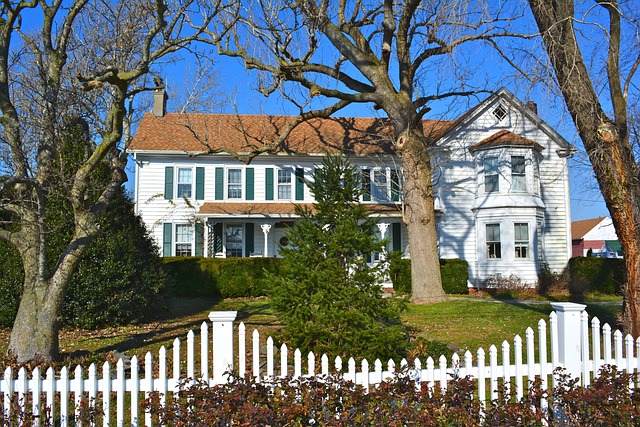Fence Staining and Sealing: A Comprehensive Guide for Prolonging Your Wooden Fence’s Lifespan
A well-stained and sealed wooden fence not only enhances the aesthetic appeal of your outdoor space but also serves as a protective barrier against the elements. This comprehensive guide delves into the intricacies of fence staining, from understanding its benefits and exploring various types to selecting the perfect stain for your needs. We’ll provide a step-by-step application process, emphasize the importance of sealing for lasting protection, and share maintenance tips to ensure your wooden fence stands the test of time.
- Understanding Fence Staining: Benefits and Types
- Choosing the Right Stain: Factors to Consider
- Application Process: Step-by-Step Guide
- Sealing for Protection: Why and How
- Maintenance Tips for Longevity
Understanding Fence Staining: Benefits and Types
Fence staining is a popular method to enhance the appearance and protect wooden fences. It involves applying a pigmented solution that seeps into the wood, adding color and creating a durable finish. The benefits are numerous; it not only transforms the aesthetic of your fence but also shields it from the elements, prolonging its lifespan. Staining can be particularly effective in hiding imperfections, such as cracks or knots, and offers a range of options to suit different preferences.
There are various types of fence staining products available, each with unique characteristics. Water-based stains are environmentally friendly and easy to clean up, while oil-based alternatives provide deeper colors and better protection against UV rays. Some stains also contain preservatives that further protect the wood from moisture and insect damage. Understanding these variations allows homeowners to make informed decisions based on their specific needs and desired outcomes.
Choosing the Right Stain: Factors to Consider
When selecting a fence stain, several key factors should guide your decision. First, consider the wood species and its natural characteristics. Different woods react uniquely to stains, so understanding the grain and color variations will help determine the best product. For instance, redwood and cedar have distinct properties that necessitate specific formulations.
Also, evaluate the fence’s exposure to elements such as sunlight, moisture, and temperature fluctuations. Extreme conditions can accelerate deterioration, making protective stains with UV inhibitors crucial for longevity. Additionally, think about personal aesthetic preferences, as stain colors range from natural to dark tones, each enhancing the wood’s beauty in different ways.
Application Process: Step-by-Step Guide
Application Process: Step-by-Step Guide
Begin by thoroughly cleaning and preparing your wooden fence. This involves removing any existing paint, stains, or debris using a pressure washer or brush. Sanding the surface is the next step to create a rough texture that promotes better adhesion for the new stain. Ensure all dust is cleared after sanding to avoid blocking the sealant’s pores.
Apply a coat of high-quality fence stain, following the product’s instructions for the appropriate application method and drying time. Once dry, spread an even layer of sealing solution using a brush or roller. This step forms a protective barrier against the elements, enhancing your fence’s longevity and aesthetic appeal.
Sealing for Protection: Why and How
Sealing a wooden fence is an essential step in maintaining its beauty and longevity. Wood is naturally susceptible to elements like sunlight, rain, and harsh temperatures, which can cause fading, cracking, and rot over time. Sealing acts as a protective barrier, shielding the fence from these environmental stressors.
The process involves applying a specific type of sealant, usually in a liquid form, that penetrates the wood’s surface. This sealant forms a protective coating, filling in any pores and cracks to prevent moisture absorption. By blocking out the elements, sealing preserves the natural color and texture of the wood, ensuring your fence remains vibrant and robust for years to come.
Maintenance Tips for Longevity
Regular maintenance is key to ensuring your wooden fence stays vibrant and durable for years to come. A simple cleaning routine can prevent buildup of dirt, mold, and mildew, which can compromise the health of your fence. Use a soft-bristled brush or sponge to gently scrub the fence with a mild detergent, then rinse thoroughly with water.
Protecting your wooden fence from the elements is another vital step. Apply a fresh coat of stain or sealant every 2-3 years to create a protective barrier against UV rays, rain, and snow. This not only preserves the wood’s appearance but also extends its lifespan. Regular inspection for any signs of damage, such as cracks or rot, will allow for prompt repair, preventing small issues from turning into major problems.
